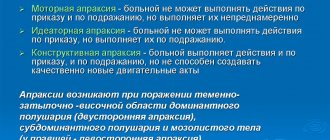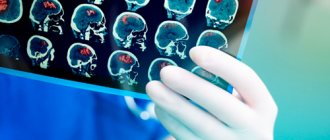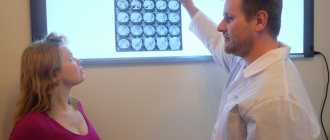Pick's disease is one of the types of senile dementia in which atrophic changes occur, most often in the frontal and temporal lobes of the brain. It occurs mainly in older people over 50 years of age. Clinical manifestations are similar to Alzheimer's disease, but are less common and more malignant. Women are diagnosed twice as often as men.
Disease history
Pick's disease has been little studied and is rarely diagnosed. From the moment of detection, 6–8 years pass until the end of life. The disease is based on atrophic processes in the brain, and this is not due to a hereditary predisposition, although doctors previously considered genetics to be the main factor in the development of the disease.
Czech doctor Albert Pick was the first to describe the symptoms of the disease in 1892, after which the pathology was named after him. It was he who suggested a hereditary connection - he discovered that relatives of people who suffer from dementia are also likely to develop it.
Arnold Pick did not consider pathology a separate disease, but assumed that it was only a variant of senile dementia. When the development of the disease was studied pathologically, distinctive morphological features were discovered, and it was identified as an independent nosology.
Dementia is...
Dementia is a progressive and irreversible process in parts of the brain, leading to loss of intelligence and a decrease in other mental functions of a person. However, consciousness at the onset of the disease remains clear for quite a long time, symptoms develop for approximately six months, although there are cases of reactive development of the disease.
The following factors can provoke dementia:
- uncontrolled use of medications;
- vitamin B deficiency;
- infections;
- alcohol abuse;
- tumors;
- head injuries.
The average life expectancy of a patient with this disease is no more than ten years.
Description of the disease
According to the literature, Alzheimer's disease is four times more common than Pick's dementia. Due to the rarity and complexity of diagnosis (at least intravital), there is not much data on the disease. It is known for sure that men get sick less often, and the pathology is progressive.
Senile dementia is characterized by severe mental impairment and neurological pathologies. The brain is affected mainly in the frontotemporal area, resulting in impaired behavior and speech.
Pick's disease is often diagnosed against the background of mental disorders, but they are not considered the root cause of the disease, although they provoke its development. Not only the temporal and frontal lobes can undergo atrophy - sometimes it goes beyond and affects the subcortex. In this case, there is no inflammation, vascular disorders are either absent or mild.
The neurodegenerative disease progresses slowly at first, but in the initial stages entire groups of nerve cells die. Over 5-7 years, they can spread to the entire brain, although the focus is observed mainly in the temporal and frontal lobes. First, destructive processes affect the second and third convolutions, and a little later - the first. Less commonly, the parietal lobes may be affected.
The manifestation of Pick's disease begins in the anterior frontal regions of the brain, which immediately affects a person's behavior and personal characteristics. Later, the temporal lobes, which are responsible for intelligence, memory, and concentration, undergo changes. The cortex of the speech analyzer is also destroyed, which immediately affects speech abilities.
Unlike other neurodegenerative pathologies in psychiatry, Pick's disease is characterized by deep damage to the entire lobe of the brain, and not just part of it. First, the upper layers are affected, then the process spreads deeper.
Examination of brain tissue under a microscope showed that patients experience “swelling” of cells, the thickness of the gray matter decreases, the transition from gray to white matter is blurred, and the boundaries are unclear. Another characteristic feature is the separation of the cerebral vascular endothelium. This causes circulatory disorders, stagnation of cerebrospinal fluid and, as a result, enhances neurodegenerative processes and atrophy. Moreover, separation of the endothelium always occurs in Pick's disease, but in Alzheimer's disease - only in 25% of cases.
Manifestations and characteristic signs
Examinations of patients diagnosed with Pick's disease reveal symptoms that are divided into two groups - difficulties with oral and written speech and behavioral disorders.
People around and close to the patient note that he is experiencing negative personality changes.
Among the characteristic manifestations are:
- Atrophy in the frontal regions of the brain
affects high mood, a person becomes completely irresponsible in the matter of managing everyday life and fulfilling his duties. There is absent-mindedness and inattention. Patients also often experience sexual liberation. - With atrophy of the temporal lobes,
patients exhibit opposite qualities - they become overly suspicious, it seems to them that others do not need them, they experience a feeling of loneliness and abandonment. - With any localization of the lesion
, speech is impaired, the meaning of speech is simplified, expressions of the same type appear, the ability to correctly construct sentences and convey one’s thoughts is impaired, as well as to understand and analyze the speech of other people. Patients stop taking care of themselves and become sloppy. Constant bouts of emotional outburst occur. - In the middle of the development of the disease,
the patient’s weight changes sharply, obesity occurs, and then the opposite state occurs - exhaustion of the body occurs with general weakness and deterioration in the functions of physiological processes.
We can definitely say that Pick’s disease radically changes a person’s personality.
Causes of the disease
The etiology of Pick's disease is still unclear. Although there are “familial” episodes of the disease, more often it is not transmitted from parents to children, but is diagnosed in siblings. However, the hereditary factor has been completely refuted.
Etiological factors are considered:
- negative effects on humans, in particular on the brain, of chemicals;
- incorrect dosage and/or frequent use of anesthesia;
- mental disorders.
Not the main, but provoking factor can be considered a lack of B vitamins, traumatic brain injuries, and intoxication. Some experts believe that a provoking factor may also be a failure in the metabolism of tau protein, a component that is an element of the cell membranes of neurons.
In this disease, brain cells undergo atrophy and destruction - they lose functionality, decrease in size or are completely destroyed. Regardless of the combination of symptoms, it is always accompanied by dementia due to a violation of the higher function of the cerebral cortex. In this case, dementia is acquired.
The risk group includes patients over 50–55 years of age, females, and in whose family there are cases of this type of dementia. Traumatic brain injuries do not serve as a provoking factor for infection, but significantly accelerate and aggravate the course of the disease.
The disease can be diagnosed in younger people as early as 40–45 years of age. But at this age it progresses slowly, the symptoms are mild, so patients rarely see a doctor, and at the time of diagnosis, the second stage is already detected. The onset most often is not so pronounced and can manifest itself in increased anxiety, loss of control over one’s actions, and depressive states, which the patients themselves usually justify as stress or other similar reasons.
Niemann–Pick disease type C: diagnosis, follow-up and treatment of patients in Russia
Niemann–Pick disease belongs to the group of lysosomal storage diseases and is characterized by autosomal recessive inheritance. For pediatric neurologists, Niemann-Pick disease type C is of particular interest due to the polymorphism of clinical symptoms unusual for childhood, which depends on the age of manifestation of the disease (muscle hypotonia, delayed psychomotor development, cataplexy, dysphagia, intellectual disability, ataxia, etc.). The only method of pathogenetic treatment of Niemann-Pick disease type C is substrate-reducing therapy with miglustat (Zaveska®). The effectiveness of the drug in improving neurological symptoms (spontaneous eye movement in the vertical plane, impaired swallowing function, impaired coordination of movements, etc.), stabilizing the disease or slowing its progression has been proven. Miglustat has a favorable safety profile. Early diagnosis of this orphan disease is fundamental to the effectiveness of therapeutic interventions.
Table 1. Prevalence of rare (orphan) lysosomal storage diseases [3]
Table 2. Molecular genetics of Niemann–Pick disease, type C
Table 3. Frequency of clinical manifestations of Niemann–Pick disease, type C [7]
Table 4. Recommended dose of Zavesca® for Niemann-Pick disease, type C, depending on body surface area
Table 5. Safety profile of Zavesca® [21]
Table 6. Symptomatic treatment of patients with Niemann–Pick disease, type C [11]
In recent years, attention to rare (orphan) diseases, and in particular to lysosomal diseases, has increased significantly. First of all, this is due to the revelation of the essence of many lysosomal diseases. An equally important stimulus to the study of lysosomal diseases was the discovery of the possibility of their pathogenetic treatment using enzyme replacement agents. An extensive group of lysosomal storage diseases, including 45 nosological forms, includes Niemann–Pick disease type C [1].
Definition, frequency and etiology of Niemann–Pick disease type C
Lysosomal storage diseases are characterized, as a rule, by early manifestation of the disease, progression of the course, severe damage to vital organs and systems of the body, leading to early disability and premature death, often starting from the neonatal period. Niemann-Pick disease type C is clearly distinguished from other forms of lysosomal diseases, including Niemann-Pick disease type A and type B, is an independent disease and belongs to the category of rare (orphan) diseases.
The incidence (incidence) of Niemann–Pick disease type C is 1:100,000–1:120,000 live births [2]. The estimated prevalence of Niemann–Pick disease type C is 0.85 per 100,000 population [3]. In reality, the prevalence is obviously higher, which may be due to the presence of unregistered cases, incorrect diagnosis, incomplete diagnosis, etc. The disease is pan-ethnic in nature and widespread everywhere. A high incidence of Niemann-Pick disease type C1 has been noted among some genetic isolates: the French colony of Acadia (Nova Scotia), Bedouin groups in Israel, Spanish settlements in Colorado and New Mexico, which is associated with the founder effect.
Among other lysosomal storage diseases, Niemann–Pick disease type C occupies a middle position in terms of prevalence. Comparative data on the prevalence of individual forms of lysosomal diseases are presented in table. 13].
In the Russian Federation, diagnosis of Niemann–Pick disease type C began in 2008. At the beginning of 2013, 11 patients were diagnosed, of which 2 were foreign citizens. Among the diagnosed patients there are 10 children from 3 to 18 years old and 1 adult (26 years old). Treatment has begun for 7 people. The predicted number of patients is more than 170 people.
Niemann-Pick disease type C is a progressive autosomal recessive hereditary neurodegenerative disease with hepatosplenomegaly associated with dysregulation of intracellular lipid trafficking [4]. It is characterized by an unfavorable prognosis in the absence of timely and adequate specific treatment (substrate-reducing therapy). The etiology of the disease is associated with mutations in the NPC1 gene (in 95% of cases) or in the NPC2 gene (about 5% of cases) - Niemann-Pick disease, types C1 and C2, respectively [5], which leads to disruption of intracellular lipid transport and accumulation of cholesterol and glycosphingolipids in the brain and other tissues (Table 2).
Both types of the disease are inherited in an autosomal recessive manner. The NPC1 gene is mapped on the long arm of chromosome 18, in the q11-q12 locus – 18q11-q12. The Niemann–Pick disease gene NPC2 is localized on chromosome 14, in the region of its long arm – q24.3 – 14q24.3 [5].
Pathogenesis
Niemann-Pick disease type C develops as a result of hereditary failure of intracellular (lysosomal) transport of lipids (cholesterol) and their esterification (impaired fat metabolism), which leads to the accumulation of free non-esterified cholesterol in the cells of various tissues, secondary accumulation of sphingomyelin and glycosphingolipids (sphingomyelin lipidosis) mainly in the brain with profound functional and structural changes in neurons, as well as Gm2- and Gm3-gangliosides [6]. In this disease, other organs (particularly the liver and spleen) are almost always involved.
Niemann–Pick disease type C is characterized by normal levels of the lysosomal enzyme sphingomyelinase.
Clinical picture and diagnosis
Most often (in 70% of all cases) the disease manifests itself between the ages of three and eight years. Less commonly, the onset of pathology can be observed between 10 and 15 years of life. Along with this, isolated cases of the onset of the disease in the neonatal period with jaundice and splenomegaly and in adults (55 years or more) have been described. As a rule, until the manifestation of the main clinical symptoms of the disease, the psychomotor development of patients remains normal.
Early typical signs of Niemann-Pick disease type C in preschool children are impaired coordination of movements, ataxia, tremor, dysarthria, and choreoathetosis. The onset of the disease at school age and in adults is usually manifested by disorders of cognitive activity with the subsequent formation of mental retardation. A decrease in intelligence is characteristic of all cases of the disease, but the degree of its severity may vary. The pathognomonic symptom of the disease is gaze paralysis when looking up and down. Quite often (about one third of patients) convulsive paroxysms develop, which are focal or generalized. Seizures are usually resistant to anticonvulsant therapy. A characteristic feature of types C1 and C2 is hepatosplenomegaly, which can manifest itself both at the onset of the disease and after the development of neurological symptoms. The frequency of clinical manifestations of the disease is shown in table. 3 [7].
The disease progresses steadily, ending in death, usually between 5 and 15 years of life. Variants with a later onset of the disease (during school years and in adults) are characterized by a significantly slower progressive course [8, 9, 10].
Types C1 and C2 are similar in their clinical manifestations.
The following clinical forms of the disease are distinguished [11, 12].
Neonatal form
manifests up to three months of age; often debuts with intrauterine fetal hydrops. In the newborn period, the main symptoms may be prolonged jaundice, hepatosplenomegaly, ascites, and muscle hypotension.
Early infantile form
manifests itself between the ages of 3 months and 2 years; characterized by hepatosplenomegaly, delayed psychomotor development, muscle hypotonia, and progressive cerebellar disorders (ataxia).
Late infantile form
manifests at 2–6 years of age. The main clinical manifestations are progressive ataxia, dysarthria, behavioral disorder, hepatosplenomegaly, intellectual disability, vertical gaze paresis, epilepsy, spasticity, cataplexy, dysphagia, dystonia. Fatal outcome – at the age of 7–12 years.
Youth (juvenile) form
manifests from 6 to 15 years; characterized by delayed psycho-speech development, behavioral disturbances, cerebellar (ataxia, intention tremor, dysarthria, changes in gait) and extrapyramidal (muscle hypotonia, various types of hyperkinesis) disorders, various types of epileptic seizures, and sometimes polyneuropathy. A specific symptom is vertical ophthalmoparesis.
Adult form
– onset of the disease over the age of 15 years, manifested by ataxia, dystonia, psychiatric symptoms, hepatosplenomegaly, dementia.
The disease is characterized by a wide range of clinical manifestations. The average age at diagnosis is 10.4 years, life expectancy is 16.2 years, and life expectancy is 38 years.
Therapeutic prospects increase the importance of timely diagnosis of Niemann-Pick disease type C, which should be based on the clinical alertness of neurologists, pediatricians, psychiatrists, therapists, geneticists and other specialists who may include patients with the disease in question [13].
For diagnosis, biochemical methods are used (accumulation of non-esterified cholesterol in lysosomes, Philipin staining to detect lipid accumulation), histological methods (foam cells in bone marrow and spleen biopsies, azure histiocytes in bone marrow biopsies, polymorphic bodies in the cytoplasm of skin, liver or brain cells ). Genetic methods (DNA diagnostics) are used to confirm the diagnosis, prenatal diagnosis, and identify homozygotes in proband families. To identify atrophic changes in brain structures, magnetic resonance imaging (MRI), computed tomography, and proton magnetic resonance spectroscopy are used.
Data from laboratory, functional and pathomorphological studies are also used. MRI of the brain diagnoses symmetrical atrophy of the cortex, cerebellum and hypoplasia of the corpus callosum. In biopsy samples of the liver, spleen, lymph nodes, bone marrow, tonsils, kidneys, lungs and smooth muscles, “foamy” cells with lipid PAS-positive inclusions are detected. Light microscopy reveals the deepest damage to the neurons of the globus pallidus, caudate nucleus and cranial nerves with the accumulation of PAS-positive lipids in them. Glia cells also record deposits of fats, cholesterol and lipids. Electron microscopy reveals concentric lamellar bodies in neurons, similar in structure to inclusions in Gm2 gangliosidoses.
Differential diagnosis, treatment and prevention
Niemann-Pick disease type C should be differentiated from other storage diseases: Gm1- and Gm2-gangliosidoses, mucopolysaccharidoses and Gaucher disease.
Obviously, for Niemann-Pick disease type C, etiotropic treatment (gene therapy) would have the greatest effect, but it has not yet been developed.
Pathogenetic therapy
Due to little knowledge of the pathogenesis of the disease, pathogenetic methods of therapy for Niemann–Pick disease type C began to be developed relatively recently. Knowledge of the mechanisms of damage to the nervous system, in particular the assessment of the number of viable neurons in the central nervous system (CNS), is extremely important for the success of therapeutic interventions. This is the basis of targeted therapy used in the treatment of hereditary neurodegenerative diseases, one of the representatives of which is Niemann-Pick disease type C.
Clinical studies have examined the effectiveness of using cholesterol-lowering agents (lowering intracellular cholesterol levels) or restricting cholesterol intake. Despite the fact that such therapy caused a decrease in cholesterol levels in the liver and plasma, no improvement in neurological manifestations was noted [14, 15]. Attempts were made to transplant bone marrow or liver, which partially normalized the accumulation of cholesterol and sphingomyelin in tissues. However, these methods were ineffective in treating neurological symptoms in patients with mutations in the NPC1 gene [16].
Because Niemann–Pick disease type C is usually diagnosed late, patients have already damaged or lost a significant portion of their central nervous system neurons. In this case, the goal of therapy is to preserve viable neurons, stabilize the disease and reduce the rate of progression of the pathological process. The severity of damage to the nervous system varies among patients, so the choice of therapy should be individualized [17].
Difficulties in treating Niemann–Pick disease type C still persist. This is primarily due to the lack of knowledge of the pathogenetic mechanisms of the disease, late diagnosis and the paucity of scientific research in this direction. The situation began to change after the creation of a new generation drug - miglustat (Zaveska®) and the development of a new direction in the treatment of lysosomal diseases - substrate-reducing therapy.
Establishment of the molecular genetic nature of Niemann-Pick disease type C, the nature of biochemical disorders, identification of mutant genes and their chromosomal localization made it possible to develop new approaches to the treatment of this lysosomal disease associated with the use of agents that prevent the formation of initial products (substances) that are precursors accumulated substrates. In Niemann–Pick disease type C, it was possible to reduce the formation of glycosphingolipids as initial accumulation products by suppressing the enzyme glycosylceramide synthase (the first enzyme in the synthesis of most glycolipids) using a specific drug, miglustat. Accordingly, a decrease in the synthesis of the initial biochemical metabolic products (glycosphingolipids) leads to a decrease in their accumulation in the organs and tissues of the body. Substrate-reducing therapy can be called a new direction of pathogenetic treatment, since it is aimed at interrupting the initial pathogenetic link of the disease.
Miglustat (international nonproprietary name (INN) - miglustat; trade name - Zaveska) was developed and introduced for the treatment of patients with Niemann-Pick disease type C by Actelion (Switzerland). According to the chemical structure, miglustat is N-butyldeoxynojirimycin (NB-DNJ) and belongs to iminosugars. The most important property of miglustat, which is an inhibitor of glycososphingolipid synthesis, is its ability to penetrate the blood-brain barrier [18]. Miglustat, along with inhibiting glycosylceramide synthase, the initial enzyme in the formation of glycosphingolipids, also inhibits sucrose-isomaltase and other disaccharidases in the small intestine, which underlies the gastrointestinal side effects of miglustat. Under the influence of miglustat, the accumulation of toxic metabolites (gangliosides GM2 and GM3, lactosylceramide and glycosylceramide) and their neurotoxic effect are prevented. However, miglustat does not inhibit the synthesis of sphingomyelin and galactosylceramide (the main component of myelin), nor does it cause ceramide accumulation [11].
Zavesca® (miglustat) was approved by the US Food and Drug Administration (FDA) as the first drug treatment for Niemann-Pick disease type C and was subsequently approved in Europe (January 2009). .). For use in the Russian Federation, Zaveska® was registered in November 2009 (registration number: LSR-008892/09). The drug is available in capsule form (1 capsule contains 100 mg) for oral administration.
In the United States, miglustat was given orphan drug status in 2008.
To date, Zavesca® is the first and only drug registered for the treatment of Niemann-Pick disease type C. Given the mechanisms of action of miglustat, it is also used in Gaucher disease as a substrate-reducing therapy.
In connection with the advent of a drug for the pathogenetic treatment of Niemann-Pick disease type C, two acute problems have arisen: 1) the need for early diagnosis of the disease, 2) the prescription of treatment as early as possible. So far, unfortunately, the developed drug is recommended for use in children with Niemann-Pick disease type C starting from the age of four. It is clear that a positive decision on the use of miglustat in young children is not only a matter of time, but also of early diagnosis of the disease, as well as the recruitment of the necessary cohort of patients and the conduct of appropriate clinical trials.
Indications for use of the drug Zaveska® are:
- treatment of progressive neurological symptoms in adults and children with Niemann–Pick disease type C, which may slow progression of the disease;
- oral therapy for mild to moderate Gaucher disease type I, including those who are intolerant or unable to use enzyme replacement therapy in adults [19].
For Niemann-Pick disease type C, the recommended dose of Zaveska® for adults and children over 12 years of age is 200 mg 3 times a day; for children from 4 to 11 years of age, the dose is prescribed based on body surface area (see instructions for the drug, Table 4 ).
The effectiveness and safety of miglustat (Zavesca®) have been demonstrated in a number of studies. An evaluation of the results of a multicenter study involving 66 patients with Niemann–Pick disease type C showed that the majority of patients experienced stabilization or improvement of their condition after treatment with miglustat [19]. At the same time, the rate of decrease in the total index on the modified disability scale decreased significantly, and in 75% of patients the effect of the therapy was rated as “good.” It is important to emphasize that in patients with Niemann–Pick disease type C, miglustat therapy has a positive effect on neurological disorders. In addition, when using the drug Zaveska®, there is a slowdown in the progression of the disease. In a study by MC Patterson et al. During therapy with Zavesca®, in the majority of patients of all age groups, the condition either improved or stabilized in at least 3 of 4 parameters (ataxia, dystonia, dysarthria, dysphagia) [20].
The drug is characterized by a favorable safety profile and good tolerability in both children and adults (Table 5) [21]. As shown in the study by M. Pineda et al., in which the average time of use of Zavesca® in 67 patients was 533 days, 45% of patients experienced at least one adverse reaction [21].
There are data on the effectiveness of treatment with miglustat in patients aged from 7 months to 44 years (mean age 14.68 ± 10.84 years) with Niemann-Pick disease types C1 and C2 [14]. During therapy with Zaveska®, patients with mutations in the NPC1 gene showed an improvement in swallowing function (water, puree, paste, biscuit) (according to video monitoring using videofluoroscopy (videofluoroscopic swallowing study, VFSS) - in 85% of patients; stabilization - in 81 %; improvement in the parameter “dystonia” – in 80%, “dysmetria” – in 74%, “dysarthria” – in 63%; increase in DQ from 45 to 65 units (after 24 months of treatment with miglustat). After 36 months of treatment with miglustat improvement or stabilization of symptoms was observed in 22 patients with mutations in the NPC2 gene. Thus, improvement in the parameter “spontaneous eye movements in the vertical plane" was noted in 7 patients during Zaveska therapy and in 1 patient who did not receive miglustat; no change was recorded in 8 and in 1 patient; deterioration in 2 and 3, respectively. Improvement in the oculomotor sphere was also noted in the study by M. Pineda et al.: after 12 months of using the drug Zaveska®, an improvement or stabilization of the symptom “spontaneous vertical eye movements” was shown in patients 12 years and older [21].
According to D. Bruschini et al., the use of miglustat for 2 years in 4 patients aged 11 months, 9, 10 and 12 years (3 with a mutation in the NPC1 gene and 1 with a mutation in the NPC2 gene) contributed to the normalization of swallowing function in all patients [18].
Symptomatic therapy
Along with pathogenetic treatment, symptomatic therapy is also of great importance for Niemann-Pick disease type C. Its main directions are shown in table. 6. [11].
Symptomatic drugs, although they have wide variability in their action, can be very useful in improving the condition of patients and improving their quality of life.
Particular attention should be paid to the nutrition of patients and systematically assess the ability to swallow food (there are special scales for assessing swallowing - swallowing liquid food, semi-liquid, thick, etc.). During treatment, a diet low in cholesterol and the use of drugs that reduce its level in the blood serum are recommended. If the swallowing function is significantly impaired, patients are recommended to have tube feeding or a gastrostomy tube, which makes it possible to provide patients with the necessary amount of nutrients, sufficient fluid and calories.
To correct the function of salivation in patients, atropine drops in small doses can be used.
Dysphagia is often complicated by secondary lung damage. In these situations, antibiotics may be prescribed to prevent pneumonia.
If gastrointestinal disorders develop, most often diarrhea, antidiarrheal drugs and a special diet are recommended. However, diarrhea may be a consequence of miglustat use. In these cases, to eliminate side effects during miglustat therapy and the development of diarrhea syndrome, it is recommended to review the diet and reduce the intake of lactose-containing products or intake of other carbohydrates. Separating miglustat intake from food may have a positive effect. In some cases, it is possible to prescribe antidiarrheal drugs such as loperamide or discontinue the drug Zaveska® for a short time.
To resolve emerging issues, consultations with relevant specialists (gastroenterologist, neurologist, psychiatrist, etc.) may be required.
In general, increasing the effectiveness of treatment for patients with Niemann–Pick disease type C is possible by following a number of fundamental principles:
- accurate diagnostics (institutions, methods, regional and federal registers, etc.);
- qualified medical opinions (consultant, regional council, federal council, etc.);
- developed and approved treatment standards (financial and economic calculations, financing, etc.);
- developed and approved clinical guidelines (international, federal, etc.);
- effective interaction in the provision of medical care (children - adults, institutions, doctors, approved documentation);
- advisory assistance during the treatment process (institutions, experts);
- timely replenishment of the list of vital and essential drugs (inclusion of drugs, orphan drugs, etc.).
The prognosis of the disease is significantly improved with the use of miglustat (Zaveska®).
Prevention
Prevention is based on data from medical genetic counseling. The medical genetic risk for the proband's siblings is 25%. If the genotype of the proband and the types of mutations in carriers are established, prenatal diagnosis of Niemann-Pick disease types C1 and C2 is possible. The diagnosis can be established at 10–12 weeks of pregnancy with a molecular genetic study of chorionic villus biopsy. In some cases, the study of sphingomyelinase activity in amniocytes and chorionic villus biopsies using biochemical methods can provide some assistance, but such an analysis requires a cell culture.
Difference between Pick's disease and Alzheimer's disease
Alzheimer's and Pick's diseases are similar, but they are two separate forms of pathology with their own clinical manifestations. Common to the disease is dementia. But when diagnosing Pick's disease:
- memory is partially preserved;
- concentration remains;
- changes in personality characteristics are more pronounced - absence of emotions and a decrease in the frequency of their manifestation, apathy, indifference;
- if the basal cortex of the brain is damaged, the concepts of morality and morality disappear - a person loses his sense of tact and does not comply with generally accepted norms of behavior;
- if the brain is simultaneously affected in the area of the forehead and temples, speech changes, it becomes illegible, clumsiness appears in movements.
Unlike Alzheimer's disease, Pick's disease has difficulty navigating a new environment. He may go very close to home, but is unable to find his way back. In addition, disorientation in time is characteristic - it is difficult to determine what time of day it is.
In general, Alzheimer's disease is milder and its symptoms are not as pronounced. This affects the patient’s quality of life and its duration. Patients, as a rule, live shorter lives, their condition is more severe, and due to the progression of the disease they quickly lose their human appearance.
Questions and answers
Is it possible to cure Pick's disease permanently?
No, the progressive decline of brain function is an irreversible process. You can only correct its course and help the patient remain in clear consciousness for as long as possible.
Can two types of pathology—speech and behavioral—occur simultaneously?
No, the disease is formed by one of two mechanisms. First there is a disorder in the cognitive sphere, and then speech, and vice versa. Then other symptoms appear, including the manifestation of dementia, they increase in severity.
Stages of the disease
Pick's disease is divided into three stages. From detection to the end of the third stage, a maximum of 10 years passes, more often 6-7. Types of pathology:
- First stage. Characterized by disinhibition and actions that have no motive. For example, the patient may have neutralized basic instincts and lack control over his actions and emotions. Another characteristic feature of the onset of the disease is selfishness. In addition, libido sometimes increases and sexual disinhibition occurs. There are also changes in speech - repeated repetition of the same words, sentences or stories occurs. The emotional sphere at this stage is relatively stable - most often there is euphoria, which manifests itself in high spirits, but it can suddenly give way to complete apathy. There is no memory impairment yet, but at this stage the person cannot explain his strange behavior or justifies it with impatience.
- Second stage. All the symptoms described above get worse. Focal signs of dementia appear, speech becomes even less intelligible, it is difficult for the patient to understand and assimilate information, he may forget events that happened a long time ago or very recently. It may be difficult for him to count and perform targeted movements - fine motor skills are impaired. At this stage, the disease is almost identical to Alzheimer's disease, but there are no epileptic seizures. Another characteristic feature is imitating the movements/facial expressions of other people and automatically repeating new words. The pain threshold also increases (cutaneous hyperalgesia).
- Third stage. It is considered final. It is characterized by complete insanity, decreased muscle tone and, ultimately, a vegetative state of the patient. He cannot move, solve everyday issues, for example, eat, relieve natural needs, or dress. At this stage, incurable disability is diagnosed, which ends in death.
Stage 3 dementia is irreversible. At this time, the patient needs constant care - he himself is not able to perform even the simplest tasks, since his capacity, both mental and physical, is lost.
Pathology in men and women
Female patients suffer from this disease more often than males. The first symptoms of the pathology are very similar to the onset of menopause against the background of hormonal changes in the body, so timely diagnosis is difficult.
Signs and warning signs of the disease in women are similar to the development of depression and emotional disturbances. The accompanying behavioral disorders include:
- increased aggressiveness;
- unmotivated rudeness towards others;
- hysterics, frequent mood swings;
- low mood, apathy;
- poverty of the emotional spectrum, sometimes even a complete absence of emotions;
- manifestation of hypersexuality;
- indifference to loved ones, their experiences, lack of empathy.
Approximately 2 years after the onset of this set of symptoms, signs of dementia appear. The woman stops responding to the requests of others, she does not take care of herself and ignores the rules of personal hygiene. Physical weakness develops progressively, and patients often stop walking. They need to be fed and the patient’s condition constantly monitored. Speech is often disrupted, and it is very difficult even for loved ones to understand what a woman wants to say. Timely treatment of Pick's disease will help prevent a rapid increase in symptoms.
Men suffer from this disease much less frequently than women. Their set of symptoms is slightly different. The first sign of the development of pathology is increasing selfishness and conflict in behavior. A man becomes irritable, does not take into account the opinions of others, and can talk only to himself for hours. He concentrates only on himself, his desires, thoughts, plans.
- Attentiveness and sensitivity to the problems of loved ones fades into the background or disappears altogether.
- Touchiness prevents the patient from adequately perceiving reality and does not allow him to calmly analyze what is happening.
- The loss of morality is accompanied by a perverted form of sexual desire. The latter is expressed in the desire to spy on naked people or demonstrate their genitals to strangers.
- The mood changes dramatically; depression and apathy can turn into euphoria or a growing outburst of anger in a few minutes.
There are differences in the manifestation of the disease in young and old people. The natural aging process is accompanied by a decline in physiological functions. A person develops specific personality traits: increased emotionality, activity, impulsiveness and anxiety.
If you start treating Pick's disease at the first stage of development, there is a high chance of supporting the body and giving it an incentive for long-term resistance.
An elderly person sometimes cannot find words in communication; he can talk to long-dead people, visualizing them in his imagination. The sleep-wake pattern is disrupted, and increased anxiety is observed in the evening. It is expressed in constant walking around the house, at this stage symptoms of obsessive-compulsive disorder may appear.
If a disorder is diagnosed in a young person, its symptoms affect everyday and professional activities. Such a person loses morality, ceases to behave adequately in society, and provokes conflict situations in the work team. The pathology is accompanied by disorders of the speech apparatus, errors in written speech, the patient’s handwriting changes, and the ability to learn and acquire new skills decreases.
Symptoms
The severity of symptoms, as well as their range, depend on the stage of Pick’s disease. Main signs of the disease:
- Loss of moral principles. The patient may relieve his natural needs in inappropriate places, not control his behavior and statements, selfish character traits become aggravated, and overall behavior becomes asocial.
- Immediate realization of instincts. This also applies to sexual desire - with increased libido, frequent casual sexual contacts are possible, including with strangers. The possibility of waiting also disappears - all the physiological needs of the patient must be fulfilled as quickly as possible. For example, bulimia may develop - uncontrolled eating of large amounts of food even after satiety.
- Change in speech. It becomes indistinct, multiple repetitions of jokes, words, and individual phrases can be traced. This is called the "gramophone record" sign.
- Mood swings. It can range from euphoria to complete apathy, and only a few minutes can pass in between.
- Dementia. Its severity depends on how atrophic processes develop in the brain. But in general, emotional instability, periods of disinhibition and rigidity, loss of desires, goals, and complete lack of will can be traced. It is possible to develop depression, and sometimes a combination of inappropriate behavior with euphoria.
The more Pick's disease progresses, the more severe the symptoms become:
- misunderstanding the speech of others;
- loss of basic numeracy, writing and reading skills;
- inadequate perception of what is happening around;
- memory losses;
- inability to perform actions consistently and logically;
- at the end, deep dementia, disorientation, and loss of self-care skills develop.
If at first such violations are episodic in nature, then by the end of the second and third stages they become permanent, progressing until the complete destruction of the intellect.
The death of patients with Pick's disease is most often due to a combination of a number of factors:
- cerebral insufficiency;
- infection of bedsores followed by sepsis;
- congestive pneumonia due to constant exposure to a horizontal position;
- ascending pyelonephritis, etc.
Changes affect the physical and mental spheres of a person. Some develop obesity or, on the contrary, exhaustion, intelligence suffers greatly - vocabulary gradually decreases, a person loses previously acquired knowledge, even if before the disease he was a specialist in his field with an above-average level of intelligence.
Diagnostics
Diagnosis usually begins with interviewing family and friends, collecting anamnesis and examining the patient. Diagnostic measures are divided into several stages:
- Differentiation of the disease from other pathologies, for example, Alzheimer's disease. It is also necessary to exclude oncology, vascular disorders, schizophrenic syndrome, and tumor processes in the frontal zone of the brain.
- Additional consultations with narrow specialists. For example, consultations with a neurologist or psychiatrist may be required.
- EEG. A decrease in the bioelectrical signature emanating from the frontal areas of the brain is recorded.
- REG, ultrasound. This diagnosis allows you to exclude or confirm vascular changes.
- EchoEG. Allows you to detect the presence of fluid in the brain.
- MRI. Necessary for clear visualization of atrophic changes in brain tissue.
Laboratory tests, as a rule, are not required for the patient. They have no diagnostic value. It is extremely rare that a biochemical blood test may be prescribed.
Possible complications and consequences
Pick's disease is an incurable disease. With the best care and the right type of therapy, it will not be possible to stop its development. You can only correct the patient’s well-being.
In the early stages, patients primarily experience moral complications. The problem becomes the inevitability of awareness of the onset of a vegetative state. Against this background, a significant proportion of patients experience depression.
As Pick's disease progresses, patients lose contact with the outside world. The state of health gradually deteriorates due to the appearance of stagnation in muscle tissue. To eliminate unpleasant manifestations, massages are recommended. Blood flow to the skin reduces the risk of bedsores. Without proper care, patients with Pick's disease rapidly develop congestive pneumonia and ascending pyelonephritis.
To eliminate the risk of further deterioration in health, patients require constant medical supervision. Prescription of additional medications to relieve manifestations of concomitant diseases.
The list of complications of this serious disease:
- the patient’s transition to the stage of deep insanity, excluding the manifestation of cognitive functions;
- complete immobility sets in, caused by the patient's inability to understand that he simply must do something.
An incurable disease leads to death in a short time. The task of relatives and friends is to alleviate the condition of an incurable patient.
Treatment
Unfortunately, there is currently no effective therapy for Pick's disease. The main task of the doctor after diagnosing this disease is to support the patient’s body and slow down the destructive processes in the brain. Accordingly, treatment is selected based on the stage of the pathology and the presence of certain symptoms. It can be:
- antidepressants;
- MFO inhibitors;
- neuroprotectors to stimulate metabolic processes in the brain and increase cell activity, which helps slow down atrophic processes;
- sometimes anti-inflammatory therapy is needed;
- sedatives stabilize the psycho-emotional background and reduce aggressiveness.
One of the stages of helping a patient is constant care in the final stages. When a patient loses self-care skills, not only is he unable to perform most common household tasks, but he may also cause harm to himself or others. The solution to this problem is professional nursing care if relatives cannot be with the patient around the clock.
There is also no specific prevention for Pick's disease. General recommendations relate to maintaining a healthy lifestyle, promptly consulting a doctor if you suspect brain pathologies, and taking activities that improve cognitive function. People who have relatives with a similar disease or other types of dementia should be especially careful.
The prognosis for Pick's disease is poor. The duration of the disease until the patient’s death is influenced by age, general health, and the adequacy of the prescribed therapy.











